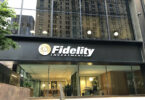The New York Federal Reserve (NY Fed) and the BIS Innovation Hub have been exploring whether a wholesale central bank digital currency (CBDC) could improve settlement times of foreign exchange (FX) transactions which typically take two days. Project Cedar, the New York Innovation Center’s first project, found that atomic settlement for FX transactions using distributed ledger technology (DLT) can happen in ten seconds or less, significantly reducing risks.
In addition to faster and atomic settlement, the DLT experiment supports 24/7/365 payments. A lack of overlapping opening hours across jurisdictions is one of the current frictions in FX transactions.
This is the first of a multi-phase effort to develop a technical design for a wholesale CBDC, although the U.S. has made no decision on issuing a Fed digital dollar.
The importance of shortening FX settlement times
In July, the BIS Committee on Payments and Market Infrastructures (CPMI) published a report and launched a consultation on the topic of payment versus payment (PvP) in FX transactions, similar to the topic explored by Cedar. A survey found that up to $8.9 trillion may be at risk daily, with a potential loss of up to $2.8 trillion.
Additionally, the proportion of FX transactions settled via PvP declined from 50% in 2006 to 40% in 2019. In some jurisdictions, the potential losses are in excess of bank supervisory capital, with the risk being particularly acute in the UK, which is the center of global FX markets.
“Project Cedar Phase I revealed promising applications of blockchain technology in modernizing critical payments infrastructure, and our inaugural experiment provides a strategic launch pad for further research and development regarding the future of money and payments from the U.S. perspective,” said Per von Zelowitz, Director of the New York Innovation Center.
Project Cedar
Phase 1 of the CBDC project explored simulating multiple homogenous ledgers, each with a different currency for the CBDC trades. Issues such as scalability, privacy and programmability were out of scope at this stage.
The NYIC developed a bespoke DLT for the trials, a permissioned blockchain that uses UTXO for transactions rather than account based, powered by the Rust language. Interledger transfer used hash time lock contracts.
It’s not the only one to develop a bespoke ledger. The MBridge multi-CBDC project out of Hong Kong has also done so.
Arguably existing DLTs are faster to deploy and tried and tested from a development and security perspective. Potential partners will also be familiar with them. However, when one considers using blockchain, performance in terms of throughput and scalability is usually listed as one of its disadvantages. Even the best performing DLTs are sometimes not considered sufficiently scalable. Hence the desire to create a bespoke one.
The next phase of the project will further explore the ledger design, and investigate interoperability between different types of ledgers.
The NYIC doesn’t consider Project Cedar as indicating any particular future direction in policy or technology.
Meanwhile, several jurisdictions and private sector entities are exploring cross border payment efficiencies using blockchain. This week the BIS announced that Project Mariana would investigate using DeFi for 24/7 FX trades with the central banks of Singapore, France and Switzerland. There are several multi-CBDC projects, including MBridge, Dunbar and Jura. And bank backed initiatives include Fnality and Partior.






